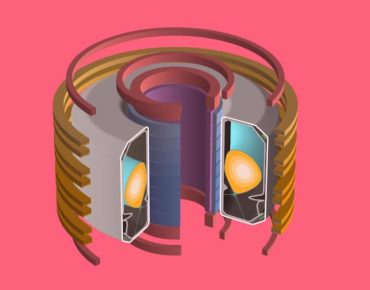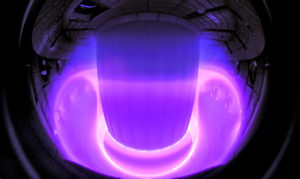DeepMind’s AI Algorithm Brings Science One Step Closer to Fusion

Harnessing the power of the stars – which are fueled by clean, stable, high-output nuclear fusion energy – is a lofty goal for meeting our world’s ever-increasing energy needs. Fusion now seems closer than ever thanks to artificial intelligence.
Researchers at the École polytechnique fédérale de Lausanne (EPFL) in Switzerland are leveraging their vast experience with plasma physics and control methods together with Google subsidiary DeepMind's AI research and technology. The result is a new magnetic control method for plasma configuration based on deep reinforcement learning.
This method, the details of which were published in Nature, was applied to a real-world plasma system at the Swiss Plasma Center’s research facility, the variable-configuration tokamak (TCV).
A tokamak is a donut-shaped fusion research apparatus that uses a strong magnetic field to confine plasma at temperatures hotter than the sun’s core (hundreds of millions of degrees Celsius). Like the sun, the extreme temperatures facilitate nuclear fusion between hydrogen atoms. SPC’s tokamak enables variable plasma configurations (meaning the plasma’s shape and position in the tokamak) that can be used to explore new ways of generating energy.
This process has so far been inherently unstable, and issues have arisen including keeping the plasma from escaping the series of magnetic coils that allow its formation and keep it in place. Each of the TCV’s 19 individual coils must be continuously calibrated with separate control systems configurations. The controllers use algorithms that give real-time estimates of the plasma’s properties to adapt the voltage of the magnets for the desired result. These plasma control systems are vital for preventing the plasma from reaching the tokamak’s walls, which stops the reaction and damages the vessel itself.

Photos of the Variable Configuration Tokamak (TCV) in Lausanne and an illustration of the TCV vacuum vessel containing the plasma with surrounding magnetic coils used for control. Credit: (Left) SPC/EPFL, (Center) DeepMind & SPC/EPFL, (Right) Alain Herzog/EPFL
Fortunately, the control system configurations can be simulated before using them in the tokamak: “Our simulator is based on more than 20 years of research and is updated continuously,” says Federico Felici, an SPC scientist and co-author of the study in EPFL’s press release. “But even so, lengthy calculations are still needed to determine the right value for each variable in the control system. That’s where our joint research project with DeepMind comes in.”
DeepMind has developed an AI algorithm, trained on the SPC’s simulator, that considerably shortens the computing time and energy needed to model these simulations while allowing for manipulation of the plasma with only one controller. The controller is a single neural network that coordinates all 19 magnetic coils at once while simultaneously learning which voltages best produce specific plasma configurations.
Training the algorithm for this meant simulating various control strategies and collecting data, or “experience.” The algorithm then creates a control strategy “to produce the requested plasma configuration,” which involves the algorithm running through multiple control settings and analyzing the resulting plasma configurations. This was then reversed by asking the algorithm to produce specific plasma configurations based on identification of the correct settings.
Simulations were promising. According to EPFL's release, DeepMind’s AI algorithm “was able to create and maintain a wide range of plasma shapes and advanced configurations, including one where two separate plasmas are maintained simultaneously in the vessel.” The algorithm was then used on the actual tokamak to test its real-world application, which was equally as promising as it validated their results.

Camera image of a plasma inside the TCV tokamak, regions of different colors correspond to different temperatures of the hot plasma.The center of the plasma is so hot that it does not emit visible light.
Credit: Curdin Wüthrich/SPC/EPFL
DeepMind outlined how the process works in a blog post where they describe what happens inside of the tokamak: “Our controller first shapes the plasma according to the requested shape, then shifts the plasma downward and detaches it from the walls, suspending it in the middle of the vessel on two legs. The plasma is held stationary, as would be needed to measure plasma properties. Then, finally the plasma is steered back to the top of the vessel and safely destroyed.”
SPC’s collaboration began at a DeepMind hackathon where Felici happened to mention the problems with controlling the tokamak’s magnetic coils.
“DeepMind was immediately interested in the prospect of testing their AI technology in a field such as nuclear fusion, and especially on a real-world system like a tokamak,” says Felici.
The collaboration’s success shows how AI has the potential to accelerate fusion science. DeepMind notes that their method could be used in designing and scaling new tokamaks and their controllers. They also predict that reinforcement learning will be a “transformative technology” for controlling other complex machines for industrial and scientific applications.
As for humanity's progress towards fusion energy, we may not be close to each owning a “Mr. Fusion Home Energy Reactor” as seen on “Back to the Future,” but AI could be just the ticket to getting there.










